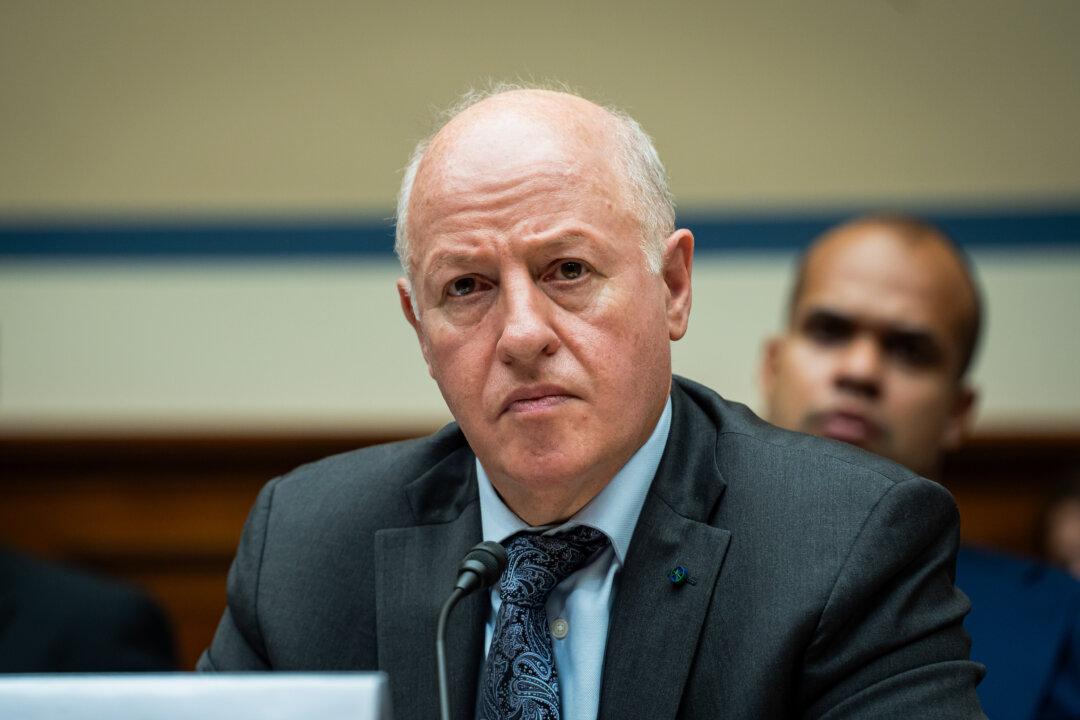“There is a possibility of evacuating New Yorkers who live in low-lying areas that could be affected by such storm surges,” said Mayor Bloomberg. The mayor met with Queens residents and visited a Department of Environmental Protection crew working on preemptive flood mitigation on Thursday morning.
“By the time Irene gets to us, which [it] is forecasted to do sometime on Sunday, it certainly will still be a powerful storm—possibly as strong as a Category 2 hurricane on Long Island, but anything can happen in terms of its direction and its severity,” Bloomberg said.
“At this point, the forecast does not indicate that the storm would hit New York City with that strength,” he said.
The city is making preparations in advance of Irene’s forecast arrival. The DEP is cleaning out catch basins to mitigate flooding; the Police Department is positioning boats at station houses in low-lying areas; the Parks Department is gearing up to handle tree emergencies; and shelters have simplified intake processes so homeless people can be protected from the elements.
The MTA is actively preparing by “making arrangements to bring in extra personnel over the weekend,” stated Aaron Donovan, media liaison for the MTA, in a press statement. “Because of the severity of the wind and rain associated with a hurricane, there may be partial or full shutdown of our services to ensure the safety of our customers and employees.”
Irene’s progress is constantly being tracked, and the hurricane is expected to make its way up the East Coast.
“Once it gets past Cape Hatteras (off the North Carolina coast), it will be overrun with cold water,” said Hugh Willoughby, a Florida International University professor who previously worked for the Hurricane Research Division of the National Oceanographic and Atmospheric Administration.
“Hurricane Irene is predicted to be a Category 1 storm by the time it hits us,” stated Council Member Ydanis Rodriguez in a press release, adding that people should “stay tuned to their radios or TVs for possible evacuation orders.” He also advised, “Make sure that we look out for our families and neighbors.”
Peter Orland, a professor who lives in Manhattan, said, “It’s probably going to be a rainstorm. It won’t be a full-force hurricane by the time is gets here.” “I don’t really have any preparation to do,” Orland added. “I’m not overly concerned.”
Hurricanes draw strength from moisture and warmth above 80-degree ocean water. The closer a hurricane is to land, and the further north it travels, the more it will slow down.
“It’s moving more slowly than a storm that would be a great disaster,” said Willoughby. “A lot of the factors that would contribute to a really destructive landfall don’t seem to be in place.”
The Office of Emergency Management (OEM) recommends gathering emergency supply kits, which include 1 gallon of drinking water per person per day, canned foods and a can opener, a first-aid kit, and a flashlight.
To find a brochure with more information about hurricanes and ways to prepare and a map of New York City evacuation zones, please visit www.nyc.gov/html/oem/downloads/pdf/hurricane_brochure.pdf
Scott Mandia, professor of Physical Sciences at Suffolk County Community College described the worst-case scenario in a telephone interview. He pointed out the current building code in New York City is for 110-mph gusts, and even one additional mile per hour could cause substantial wreckage.
The tunnels would fill up from flooding, and the antiquated sewage system would malfunction if the pipes were underwater. With strong winds, bridges would become difficult to cross.
It has been over 25 years since a hurricane has been within 75 miles of New York City. Only five hurricanes have been within 75 miles of the city since 1851, and two occurred before hurricanes started being named.
Hurricane Gloria, in 1985, was a Category 2 storm, and Belle, in 1976, was a Category 1. Hurricanes are categorized from 1 to 5, with a Category 5 hurricane being the most severe.
The September 1938 Long Island Express, which was a Category 3 storm, took the area by surprise because ship reports rather than satellite radars were then used for weather detection.
“For Long Island, it essentially just wiped the slate east of Suffolk County,” Mandia said.
Since it struck in the fall, and Long Island was mostly a vacation area, not many people were there, though the hurricane still killed about 100 people and wiped out an estimated 2 billion trees throughout New York and New England.







